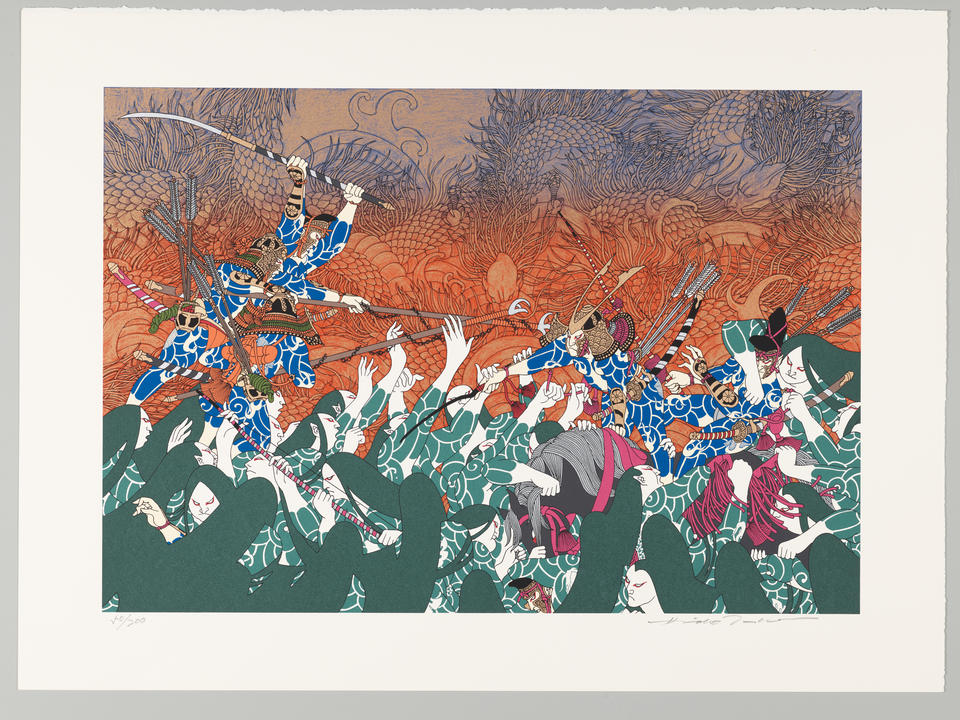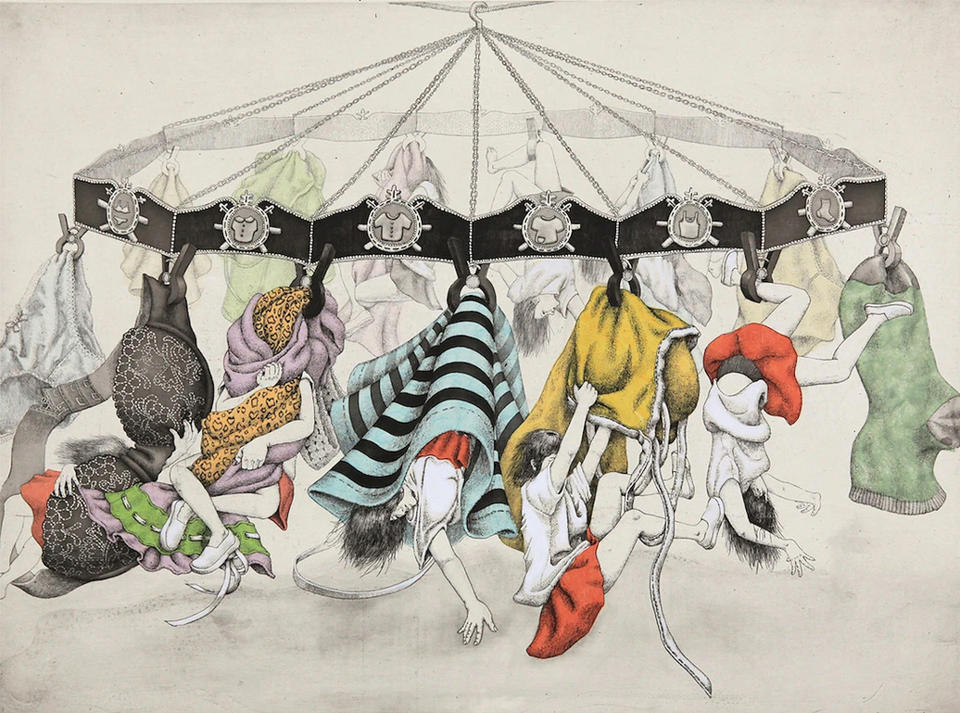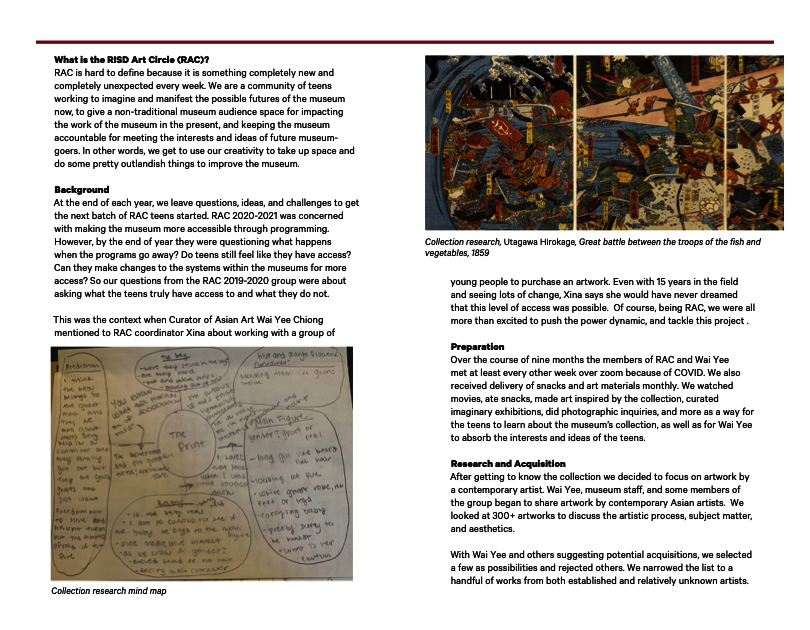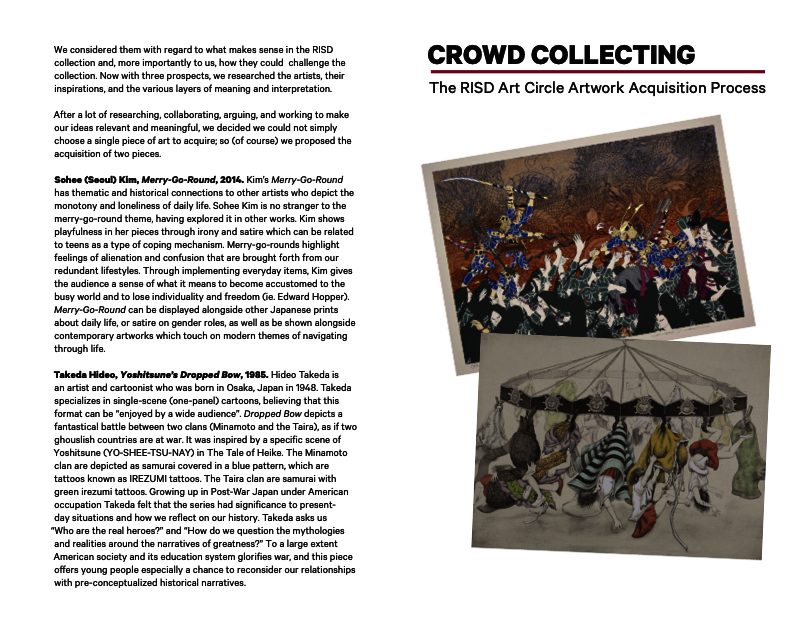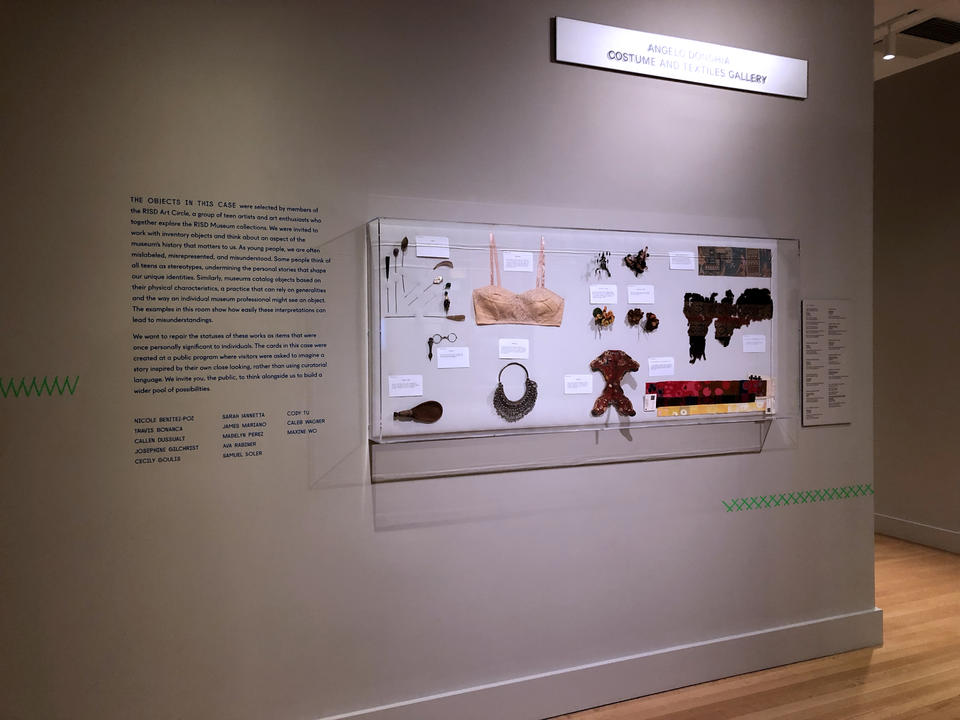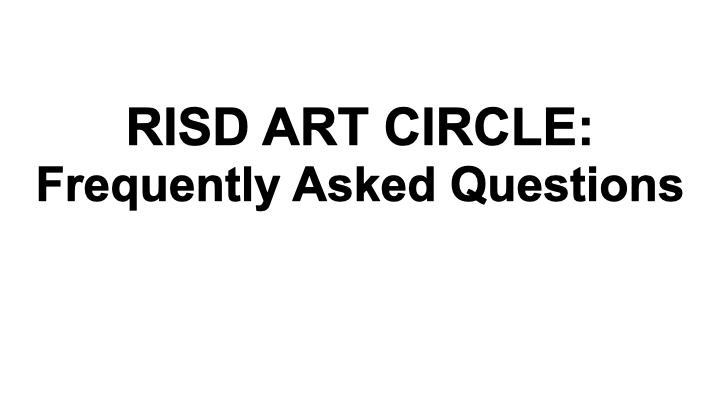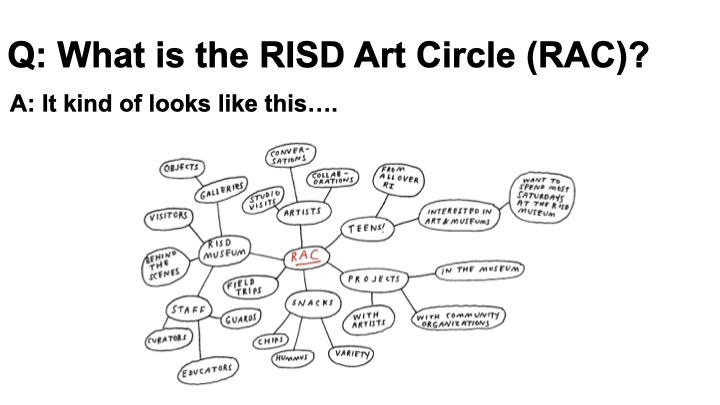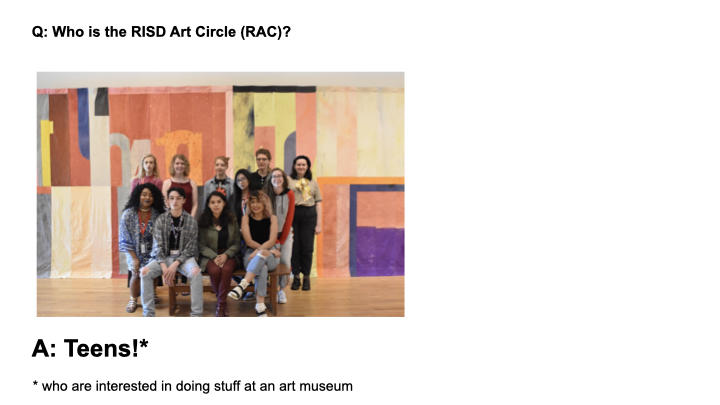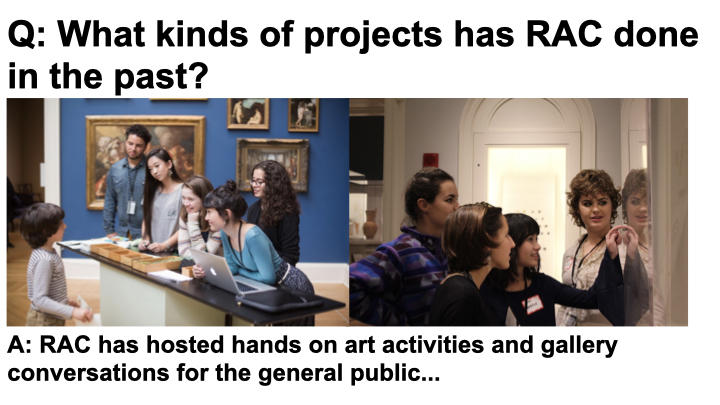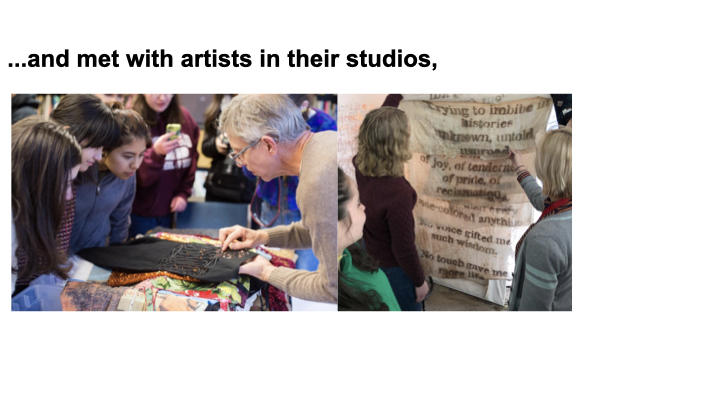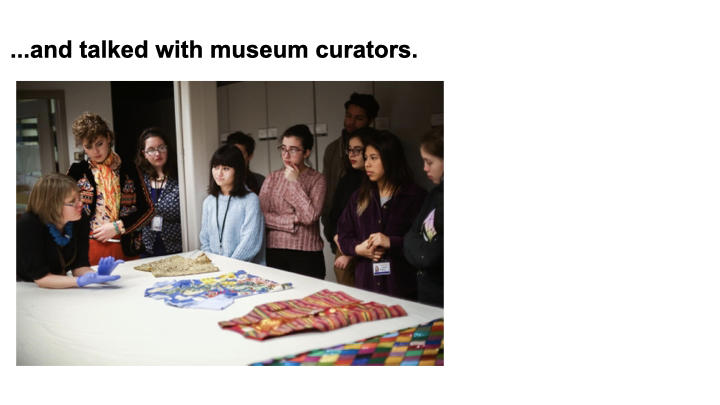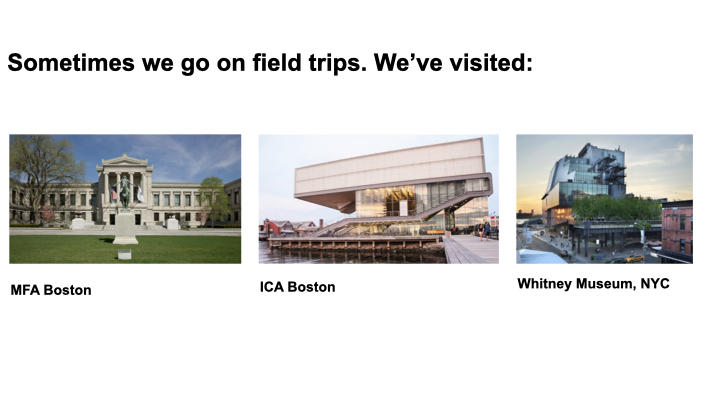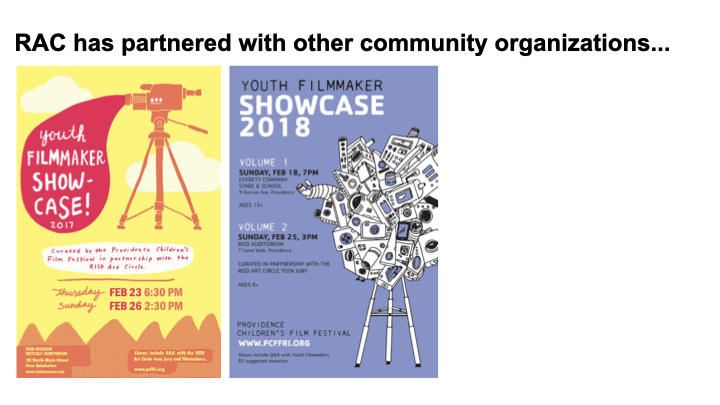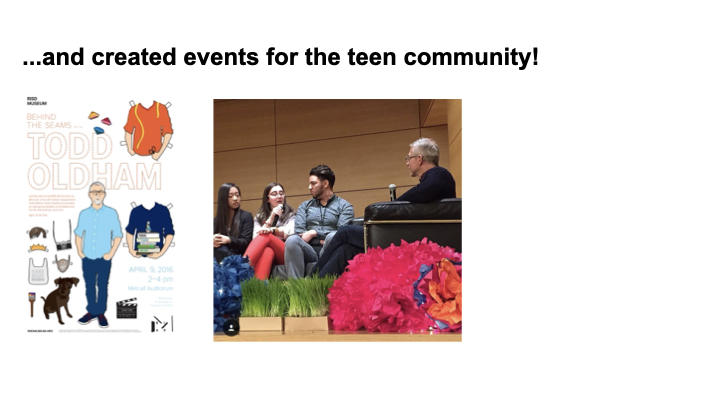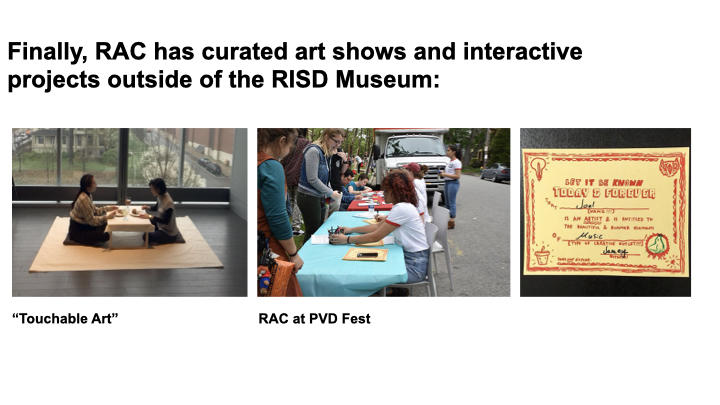WAYS RAC WORKS
WAYS RAC WORKS
Collections Interventions
Public Engagement
Community Partnerships
Print Materials and Publications
ARITST CONVOS & CONFABS
RAC is a leadership group at the museum. We create programs mostly for teens in the community. Centered a lot on having our perspective heard by a larger audience. We use the museum to create the programs and we want to reach an audience farther than that of just museum goers.
The RISD Art Circle teens are passionate about connecting artworks in the collection to the lives young people today. The group has done this through programs, installations, and acquisitions.
Collection Acquisitions with Teens
RAC 2020/21 partnered Wai Yee Choing, RISD Museum's curator of Asian Art on the acquisition of two works of art. Over the nine-month period the remeber explored over 300 works for the collection and possible works for acquisition. The group proposed two artworks Merry Ground by Sohee (Seoul) Kim 김서울 & , Yoshitsune's Dropped Bow (Yoshitsune no yuminagashi); from the series Genpe by Takeda Hideo 武田秀雄.
It was critical to that the institution the teen be part of the documented record so the following credit line was created and accompines the digital records and labes
Museum purchase made with the generous support from the RISD Museum Associates 2021 by RISD Art Circle 2021 members Emily Bardsley, Jessica Brito, Alex Fortes, Ana Galarraga, Cecily Goulis, Miles Kindness, Sofia Kinnes, Keira Kolostyak, James Mariano, Eliana Tetreault, Solange Verria, Abby Wagner and Dominic Wiharso. RISD Museum, Providence, RI.
Case Curation
The objects in this case were selected by members of the RISD Art Circle, a group of teen artists and art enthusiasts who explore the RISD Museum collection. Museums catalog and index objects based on physical characteristics, which can radically shift based on the way an individual museum professional might “see” an object. Examples in this room show how easily these interpretations can lead to misunderstandings. As young people, we are often mislabeled, misrepresented, and misunderstood. Some people can be quick to think of all teens as acting and living up to stereotypes, which undermines the personal stories that shape our unique identities. Recovering the roots of these objects is difficult, especially for pieces which did not enter the museum collection with the purpose of being treasured for their unique stories. Rather than label them using generalities, we wanted to give them with stories created by close looking. We invited the public to think alongside us in order to build a wider pool of speculative possibilities. In the absence of historical biography, we want to repair these objects’ status as items that were once personally significant to individuals.
RISD Art Circle (RAC) Archive
-
RISD Art Circle Practices - Community Partnerships
-
RISD Art Circle Practices - Print Materials and Publications
-
RISD Art Circle Practices - Collection Interventions
-
RISD Art Circle Practices - Public Engagement
-
Yearbook: 2020-2021
-
Yearbook: 2019–2020
-
2018–2019
-
2016–2017
-
Immersive Layout
-
What is RAC?
-
Single Column Layout
-
Extended Article
-
RISD Art Circle Practices - Collection Interventions
